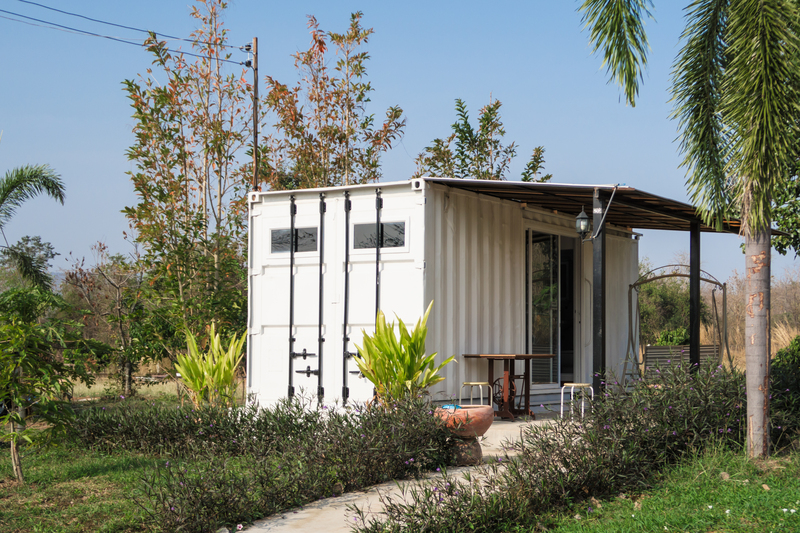Posted on 30/05/2024
In today's fast-paced and consumerist society, it has become increasingly important to adopt sustainable living practices. One of the easiest ways to make a positive impact on the environment is by following the mantra of "reduce, reuse, recycle". These three simple steps not only help reduce our carbon footprint, but also have significant long-term benefits for both society and the planet as a whole. In this article, we will explore these three steps in detail and learn how they can be incorporated into our daily lives.
Reduce
The first step towards sustainability is reducing our consumption. This means being mindful of what we buy and using resources wisely. The key to reducing is to focus on needs rather than wants. This involves making conscious decisions when purchasing goods - choosing products that are durable, energy efficient, and have minimal packaging.
Reducing our water usage is also crucial in preserving this precious resource. Simple changes like fixing leaks, taking shorter showers, and using a watering can instead of a hose for gardening can go a long way in conserving water.
Another aspect of reducing is decreasing our reliance on single-use plastics. These items take hundreds of years to decompose and often end up in landfills or oceans, causing harm to wildlife and ecosystems. Switching to reusable alternatives such as cloth bags, water bottles, and containers can significantly reduce our plastic footprint.

Reuse
The next step in sustainable living is reusing. Instead of throwing away items after one use, we should aim to extend their lifespan by finding new purposes for them. For example, old newspapers can be used for cleaning windows or as wrapping paper, while glass jars can be repurposed as storage containers.
Clothing is another area where we can practice reusing. Donating clothes that no longer fit or are not in use can give them a second life and prevent them from ending up in landfills. Additionally, we can also support thrift stores or buy second-hand items instead of always opting for new ones.
Repurposing is another way to reuse items creatively. Old furniture can be refurbished, and glass bottles and jars can be turned into decorative vases or candle holders. Not only does this save money and resources, but it also adds a unique touch to our homes.
Recycle
The last step in the "reduce, reuse, recycle" mantra is recycling. This involves turning waste into new products, reducing the need for raw materials and energy consumption. However, not all materials are recyclable, so it is essential to check with our local recycling facilities to see what can be recycled in our area.
Paper, cardboard, glass, plastic, and metal are some of the most commonly recycled materials. By separating these items from regular trash and disposing of them correctly, we can significantly reduce the amount of waste that ends up in landfills.
Apart from traditional recycling methods, there are also innovative ways to repurpose waste. For example, discarded tires can be turned into playground flooring or used as building material for eco-homes. This type of recycling not only diverts waste from landfills but also promotes creativity and innovation.
Pros and Cons
Pros:
- Reduces pollution and conserves natural resources
- Helps combat climate change by reducing greenhouse gas emissions
- Can save money in the long run by using resources more efficiently
- Promotes a more mindful and responsible lifestyle
- Creates job opportunities in recycling industries
Cons:
- Requires a change in mindset and habits
- Can be more time-consuming than traditional practices
- Some materials may not be easily recyclable
- Recycling facilities and infrastructure may not be available in all areas
Tips for Sustainable Living
- Avoid buying products with excessive packaging and opt for reusable alternatives instead.
- Use public transportation, carpool, or walk/bike whenever possible.
- Invest in energy-efficient appliances and turn off electronics when not in use.
- Use eco-friendly cleaning products and make use of natural alternatives like vinegar and baking soda.
- Support companies with sustainable practices and policies.

Takeaways
By following the three R's - reduce, reuse, recycle - we can significantly reduce our environmental impact. These simple steps promote a more mindful and responsible approach to consumption and waste management. By incorporating these practices into our daily lives, we can pave the way towards a more sustainable future for generations to come.
Conclusion
Sustainable living is not just a choice; it is a responsibility that we all have towards the planet. The "reduce, reuse, recycle" mantra is a practical and achievable way to reduce our carbon footprint and create a more sustainable world. By making small changes in our daily lives, we can collectively make a big difference in preserving our environment for future generations. So let's all do our part and embrace these simple yet impactful steps towards sustainable living.
Latest Posts
Tips for Proper Disposal of Regular Waste
Garbage Cleanup Bags - Efficient Skip Substitute

































 Get a Quote
Get a Quote